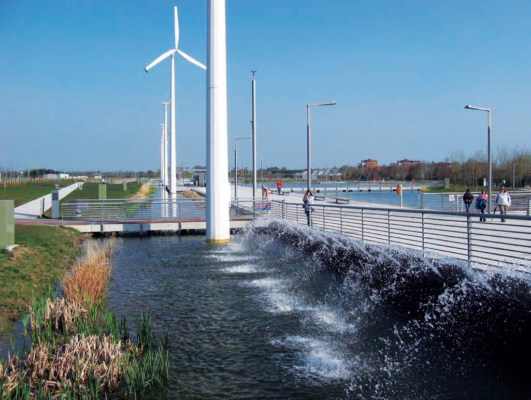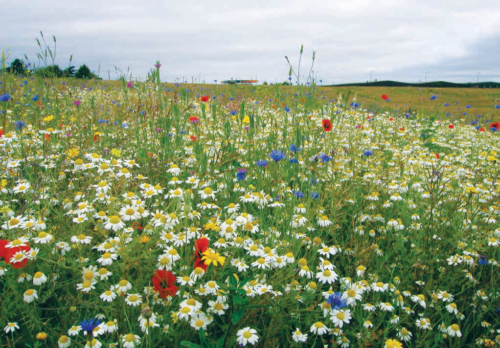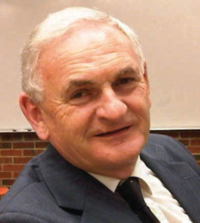Dr. Christy Boylan examines how Ireland’s parks and green spaces are evolving to meet the new challenges
The original concept of public parks was influenced by the poor quality of life being experienced by people working long hours in UK factories during the 19th century. Employers were anxious that employees work performance would not deteriorate and outdoor spaces were seen as one option for addressing this.
At that time, they were not sufficiently aware of the importance of recreation, and indeed, games such as football were forbidden in public parks, being considered disruptive of the peace and solitude. By the 20th century, public parks were regarded as being an essential part of an urban complex. In general, they were intended to cater for active and passive recreational pursuits with trees being viewed as positive enhancements to the street fabric.
In Ireland, parks were, and still, are managed by the local authorities (with the exception of national and historic parks, which are managed by the Office of Public Works) and public appreciation was usually a given because the standard of maintenance was generally high. In the era prior to the availability of herbicides and pesticides, labour was much less expensive. Generally, staff numbers were sufficient to deal with the day to day tasks, as well as developing new areas during the summer period. Flowerbed displays highlighted the local authority’s role in enhancing the city and they gave much pleasure to its citizens, as well as job satisfaction to employees in Parks Departments. Many people expressed approval that rates on their dwellings were going towards such work. During this period much park development was undertaken. And then things changed.
In 1977, the Government, under Jack Lynch as Taoiseach, abolished rates on private dwellings, which meant that local authorities would then be supported by the Rate Support Grant from the Government funds. This reduced their ability to raise funds locally and made them more on funding from other sources such as fees for planning applications. “We do not have the funding” became the common answer to requests from the public for improvements. During the recession of 1989, sta¥ numbers were reduced by approximately 25%. In response to these changes, Parks Superintendents adopted techniques such as the use of herbicides for weed control as well as changes in maintenance regimes for grasslands, by allowing some areas to become more natural and encouraging wildflowers. Choice of machinery also became more important and larger mowing equipment was purchased for large parks.
“A reduced parks staff are now responsible for parks, open spaces, cleaning streets, litter and dumping control, graffiti, burial grounds and allotments”
Some authorities availed of FAS schemes to support their works programmes. Meanwhile, the more discerning public was becoming more interested in what was happening in their areas. This meant that Council staff spent more time in meetings with residents’ associations discussing management issues for their open spaces.
Within offices, work routines changed; the daily post would arrive in the morning and after distribution, the planned activities for that day were undertaken. However, the onset of the computer age revolutionised how the public engaged with their local councils. The relationship became far more service provider and customer orientated with enquiries having to be dealt with within specified time periods. As customers, we understand the need to receive speedy answers to our enquiries but from a professional’s viewpoint, this interferes with other planned activities. During the boom years, there was an emphasis on training employees to undertake ownership of their work. This has been the hallmark of the vast majority of staff in all grades. Some even invested their own money and time in visiting parks with work colleagues in other regions and other countries to learn about new techniques or new plants. And then things changed again.
For the past five years, Ireland has endured a series of cutbacks in the public service with an emphasis on people working longer hours for less income. It is understandable therefore that change by various authorities will impact on structures and the quality of service in many areas of the public service, including the management of parks and open spaces. While budget restrictions have been a major driving force for change, there is also the aim to become more user-friendly, where people should not need to understand structures to be able to access services. Dublin City Council established five administrative areas with public access to all departments through an Area Manager. Dublin City Council and Dun Laoghaire-Rathdown County Council still operate what I term the traditional model of a Parks Department, whereby the staff (albeit fewer of them) are deployed only in the management of parks (including areas such as the North Bull Island), open spaces and street trees from a network of depots within the administrative region. Management entails capital works schemes of building and improving parks as well as ongoing maintenance. At a corporate level Parks Departments contribute landscape architecture, natural science, arboriculture and horticultural expertise to corporate projects and policy development within the Council. They also undertake a range of other functions such as advising the Planning Department on planning applications, civic decoration including regular flag flights and floral displays and working with communities on enhancing their areas.
In Fingal and South Dublin County Councils, the traditional model of parks management has been modified. Management’s response to financial restrictions, combined with the movement to break down departmental barriers, has seen an emphasis on the public realm, whereby staff engages in multi-tasking. In Fingal, the changes entailed a separation between regional parks and open spaces. The regional parks are still managed by parks staff with an expanded brief of tourism because places like Malahide Castle are important elements of tourism infrastructure. Responsibility for open spaces and street trees are combined with the Roads Maintenance Division under a new heading of Operations. In South Dublin, staff in the Parks and Landscape Services Department are combined with the Environment Department. The latter usually dealt with household bin collections and landfills but their main activity is now dealing with street sweeping and litter bins. This means that the combined staff now operating under the Public Realm Division deal with parks, open spaces and cleaning streets, litter and dumping control, graffiti, burial grounds and allotments. That entails learning new skills and for those whose particular interest is in horticulture, the job is less interesting than it was previously.

These changes are not unique to Ireland; the same has happened in many local authorities in the UK against the background of ensuring that the customer is not referred from one department to another whenever they have a complaint or an enquiry. Indeed, the UK is experiencing a very serious issue regarding financing and a recent document entitled “Rethinking Parks” by Peter Neal has outlined a number of funding models for the 21st century. It seems that further reductions in public expenditure on parks maintenance are envisaged, and has set out some alternatives such as concessions, establishing trusts and more local involvement. The kernel of the problem is that parks are a discretionary function of local authorities whereas libraries are a mandatory function. By law, councils are obliged to maintain libraries. In Ireland, section 180 of the Planning and Development Act 2000 requires councils to commence the taking in charge of residential developments, finished or unfinished, were requested by the majority of qualified electors who own or occupy the houses. This means that councils can be forced to take open spaces into charge; but there is nothing in the law that states the standard of maintenance that should be applied. Therefore councils can legally reduce standards of maintenance of parks and open spaces when budgetary restrictions are imposed. The downside of such action can lead to unsafe conditions and greater exposure to public liability claims. Also, if the maintenance standard of public parks drops, visitor numbers will decrease. The parks will become havens for anti-social activities resulting in vandalism and leading to fewer and fewer visitors, thus creating a vicious circle. Park management should aim for the virtuous circle to attract visitors who in turn encourage more visitors and increase the feeling of security, with less frequency of vandalism.
“The kernel of the problem is that parks are a discretionary function of local authorities, whereas libraries are a mandatory function”
The irony here is that local property tax (the modern replacement for domestic rates) is now in place and one of the big arguments made by politicians introducing the tax was the need to maintain public parks. In that regard, it should be noted that the International Federation of Parks & Recreation Administration (IFPRA) has in the past year produced a document entitled “Benefits of Urban Parks”, in which they have revealed that research work has proven strong evidence for a link between parks and the value of the property. Therefore, where parks are well maintained, they influence the value of the adjacent property through the virtuous circle and of course where parks are run down, then the value of the adjacent property decreases through the vicious circle. It makes the case for investing in parks and maintaining a high standard. Then as property values increase so also does the property tax for the Council. So let’s be positive about the future of public parks and hope this new tax will help to maintain standards.
While these structural changes are happening there are also other changes taking place such as the provision of cycleways and allotments in public parks. The introduction of allotments is a more recent phenomenon. In the past, they were assigned to council lands not required for immediate development. In South Dublin, allotments were provided in Tymon Park in 2004 and in Corkagh Park in Clondalkin in 2005. Now they form part of Parks policy in other local authorities. Fingal Parks Department, in particular, has taken a lead with this initiative and established large allotment schemes in the county. The emphases on environmental sustainability and reduction of energy have also brought some changes. Many herbicides much used in the past are no longer available and the use of chemicals is no longer regarded as good practice. This will entail more demands on manual and cultural means of weed control. Reduction in grass maintenance has changed the appearance of parks and open spaces, especially with the introductions of perennial plants. Professor Nigel Dunnett from Sheffield University recently gave an inspiring presentation in the Botanic Gardens on the use of annual flowers planted to form urban meadows; he highlighted their success at the new Olympic Park in London and elsewhere.


The use of volunteers to assist in parks maintenance was very successful in Central Park in New York and in Helsinki – it has yet to happen in Ireland. Perhaps this is an urban phenomenon because the 851 centres (mainly in rural Ireland) which participate in the Tidy Towns Competition represent between 15,000 and 20,000 volunteers who work very hard every year to improve their environment. The Office of Public Works encourages volunteers to assist in their management of parks, and in Dun Laoghaire-Rathdown they envisage significant use of volunteers in the future, for example, tree wardens to assist in the electronic inventory of street trees. In other countries, public parks are a strong bonding force for communities in urban areas; perhaps with the influx of people from other nations in the past decade, this may happen in the future in Ireland. ✽











